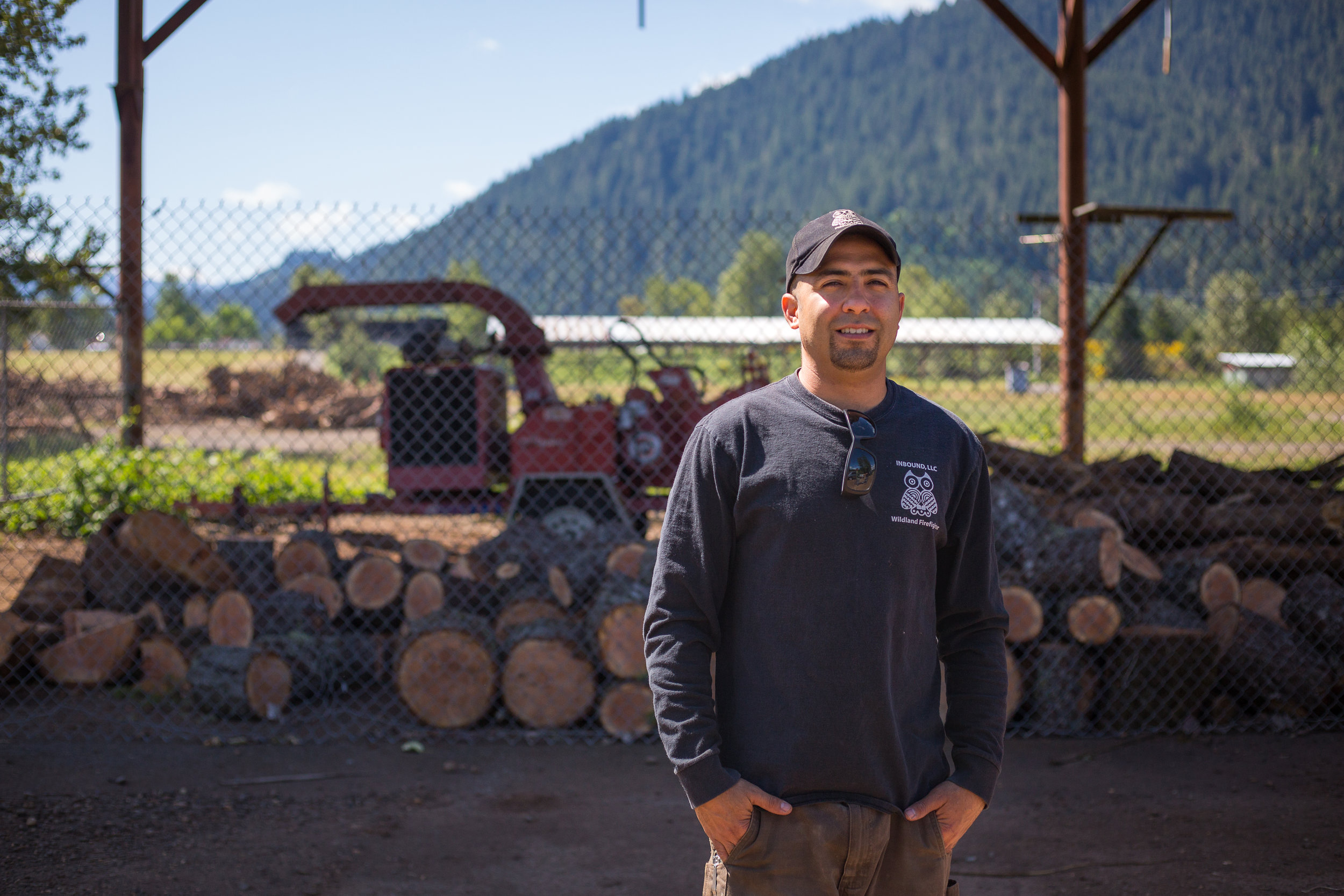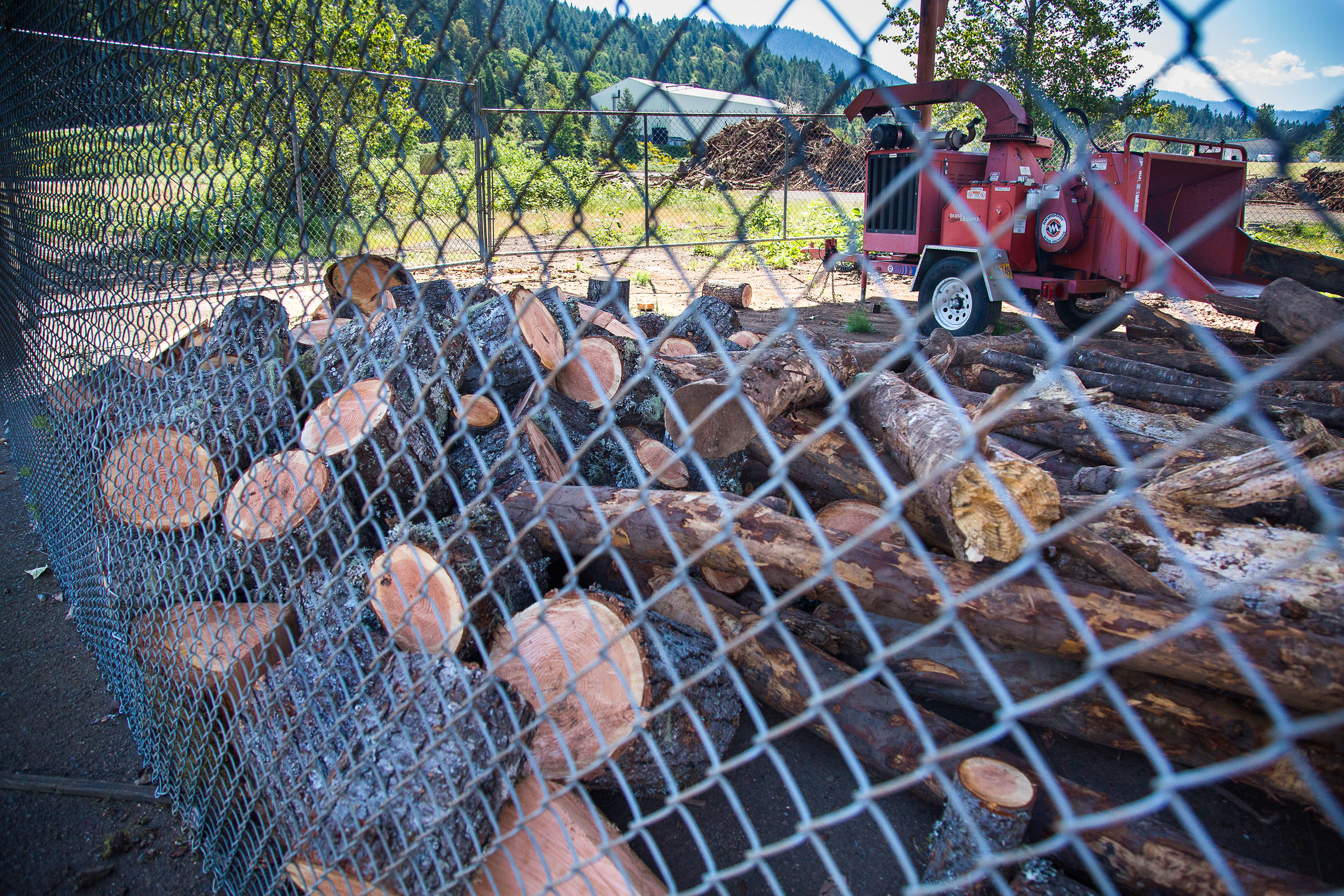
OAKRIDGE, Ore. –The former logging community of roughly 3,000 people has repeatedly failed the Environmental Protection Agency’s air quality standards. The town’s unique geography places it at the bottom of a valley, which causes air pollutants to become trapped. Another large factor contributing to the problem is the number of people who rely on wood-burning sources to heat their homes. Smoke from the fires gets trapped in the inversion and lowers the air quality of the town. Tuesday, May 22, 2018.

Employees of Inbound LLC - a contract firefighting company, unload a work truck on Tuesday, May 22, 2018. The city of Oakridge partnered with Oregon Solutions and Lane Regional Air Protection Agency (LRAPA) to implement a three-part plan to continue improving air quality in the town. The city also created a community firewood program - a collective between the city of Oakridge, the Southern Willamette Forest Collaborative, and Inbound LLC. The community firewood program provides seasoned firewood to members of the community in an effort to reduce the amount of greenwood that is burnt in town.

Where a popular bakery once stood, a mural depicting community members commemorates the loss of a local business to fire. Compared to other towns with similar population sizes, Oakridge has suffered a disproportionate number of fires. Because there is no natural gas line in Oakridge, people primarily use wood-burning sources to cook and heat their homes. Tuesday, May 22, 2018.

James Diaz works for Inbound LLC, a contract firefighting company with offices in Oakland and Portland. Wood that is collected for The Community Firewood Program is stored in this holding area and is monitored for dryness until it is ready for distribution . Tuesday, May 22, 2018.

The provided firewood heats homes more efficiently due to it being drier than greenwood. As a result, it releases fewer harmful particles into the air, improving air quality. Tuesday, May 22, 2018.

The view from Oakridge’s Dead Mountain allows visitors to see the unique structure of the town’s geography. Nestled between hills on three sides and Willamette River on the fourth, the area is prone to stagnant air and temperature inversions. Tuesday, May 22, 2018.
